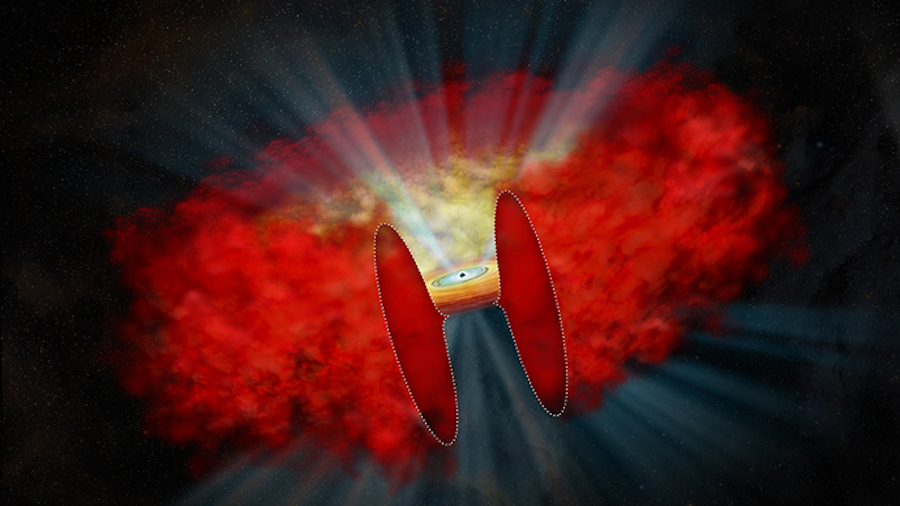
 Credit: NASA/CXC/M.Weiss
Credit: NASA/CXC/M.Weiss
Looking Hard to Find Black Holes
Black holes are good at hiding. If they are not actively feeding, the only practical way to find them is by the way they warp the spacetime around them as they spin, or the gravitational waves they produced when they collide (or, theoretically, by the burst of radiation they produce when they evaporate). Black holes that are actively feeding (that is, swallowing vast amounts of material near them) can be recognized by the enormous X-ray emission produced as the material being swallowed sprirals thorugh a flat disk and finally into the black hole. But many feeding black holes evidently don't like to be watched while they eat. They can be surrounded by a thick ring of obscuring material which hides the black hole, and its accretion disk, from the X-ray view of telescopes like the Chandra X-ray Observtory or XMM-Newton. But the NuSTAR hard X-ray observatory comes to the rescue. NuSTAR can detect very high energy X-rays that can penetrate through even the thickest black-hole shrouding rings. A new study using NuSTAR observations of 19 nearby, X-ray faint galaxies showed that, in reality, almost all of them contained actively feeding supermassive black holes near the center of the galaxy, but appear faint due to obscuration. The NuSTAR study was not only able to identify the actively feeding blacks in these systems, but helps us gain a fuller picture of the overall supermassive black hole population in the Universe.
Published: July 5, 2021
<
HEA Dictionary ● Archive
● Search HEAPOW
● Other Languages
● HEAPOW on Facebook
● Download all Images
● Education ● HEAD
>

Each week the HEASARC
brings you new, exciting and beautiful images from X-ray and Gamma ray
astronomy. Check back each week and be sure to check out the HEAPOW archive!
Page Author: Dr. Michael F. Corcoran
Last modified Monday, 26-Feb-2024 17:10:03 EST


